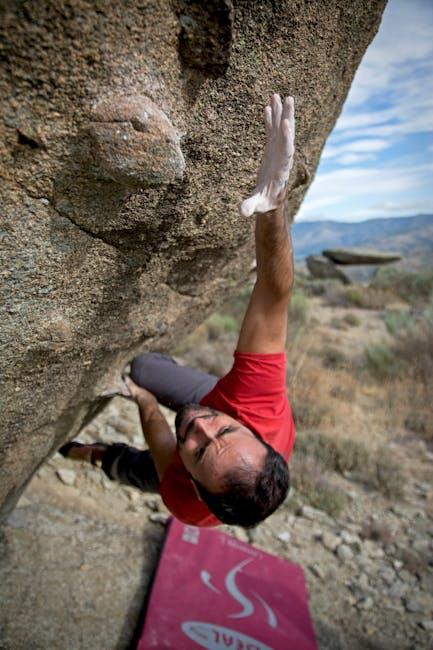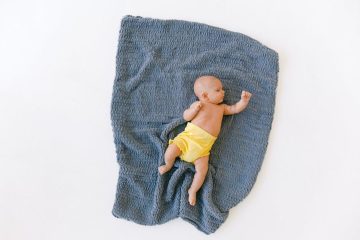Table of Contents
- Understanding the Benefits of Diaper Free Time
- Creating a Safe and Clean Environment for Diaper Free Play
- How to Encourage Natural Potty Training During Diaper Free Sessions
- The Role of Diaper Free Time in Skin Health and Comfort
- Common Challenges and Practical Tips for Successful Diaper Free Time
- Q&A
- In Summary
Understanding the Benefits of Diaper Free Time
Embracing moments when your baby plays without diapers offers myriad benefits, both immediate and long-term. Allowing skin to breathe is crucial in preventing diaper rash, a common concern for many parents. Natural airflow helps keep the delicate skin dry and free from irritation caused by prolonged exposure to moisture and friction. Moreover, this practice encourages parents to be more attentive to their baby’s body signals, fostering improved communication and bonding between them.
- Promotes healthy skin
- Improves parent-child bonding
- Reduces risk of diaper rash
Aside from skin health, these sessions can lead to enhanced bowel activity for the baby. When free of constraints, some babies may exhibit better digestive health as they gain awareness of their bodily functions. This awareness can aid in progressing towards toilet training, making it a gentle stepping stone for future milestones. It’s a wonderful opportunity for guided learning where parents can observe and respond to their child’s natural rhythms and cues.
On a practical note, implementing these moments involves mindful preparation. Ensuring a safe and clean space is vital. Whether it’s on a towel or a dedicated playmat, minimizing potential messes or accidents makes the experience less stressful for everyone. Checklist for preparedness:
| Item | Description |
|---|---|
| Playmat | Waterproof and easy to clean |
| Extra Wipes | For quick clean-ups |
| Toys | Engaging distractions |


Creating a Safe and Clean Environment for Diaper Free Play
Giving your little one some time without a diaper can be both refreshing and beneficial for their skin and comfort. However, ensuring that this time is both safe and hygienic requires a bit of preparation. Begin by selecting a designated area in your home where any potential messes will be easy to clean, such as a tiled kitchen floor or a patio. Protect surfaces from potential accidents by spreading out waterproof play mats or placing absorbent blankets that can be easily tossed into the wash. Consider adding a few soft cushions or pillows to create a cozy play space that beckons exploration and movement.
Ensuring cleanliness goes beyond surface protection. It’s important to remove any breakable or small objects that could pose safety risks. Use a gentle, non-toxic cleaner to wipe down surfaces, ensuring that your child is playing in a truly clean environment. Including a few selected toys can keep your child engaged; opt for washable and chew-safe options. Stock the area with essentials like wipes, extra blankets, and cleaning supplies, and keep them within arm’s reach to address any unexpected clean-up needs quickly.
| Essentials | Purpose |
|---|---|
| Waterproof Mats | Protects floors from accidents |
| Non-toxic Cleaner | Ensures a hygienic play area |
| Washable Toys | Keeps child entertained |
To add a layer of interaction and learning, consider narrating the process as you set up. Describe the colors and textures of the materials you’re using, encouraging your child to feel or see them. This turns a preparatory task into an engaging activity that stimulates their senses and learning. Involving your child not only makes the task more enjoyable but starts to instill early seeds of awareness about cleanliness and safety. Allowing your child to assist, even in simple choice-making, can enhance their independence and confidence.


How to Encourage Natural Potty Training During Diaper Free Sessions
Embracing a natural approach to potty training can significantly ease your child’s transition from diapers. During diaper-free sessions, the key is to create a positive and stress-free environment. Begin by selecting a comfortable, easy-to-clean area where your child can feel free and uninhibited. This setting should be safe enough for them to explore without constant supervision, thus fostering independence. As they acclimate to the freedom of being without a diaper, watch for signs of readiness such as squatting, facial expressions, or particular sounds, to encourage visits to the potty chair.
Implementing a structured routine can greatly enhance the success of potty training. Aim for times when they are most likely to succeed, such as after meals or upon waking, when their bodies naturally need to eliminate. This requires a fine balance between structure and flexibility, avoiding any form of pressure. Consider using a visual schedule to gently remind your child of potty times, which can act as a familiar cue and boost their confidence. Reinforce these moments with positive reinforcement like verbal praise, a cheerful song, or a favorite book, to make the experience enjoyable and memorable.
Incorporate engaging activities that stimulate your child’s interest and curiosity towards using the potty. Allow them to choose their own potty equipment, such as a colorful potty chair or fun toilet seat insert. When they show interest in toilet time, guide them through each step with patience and support. You can enhance this journey with the help of creative tools like storybooks about potty training or playful apps that offer a visual and interactive experience. Remember, the goal is to make the entire process a positive adventure, instilling a sense of accomplishment and readiness in your child.


The Role of Diaper Free Time in Skin Health and Comfort
Allowing infants some time without diapers not only promotes skin health but also offers a period of relief and comfort. When a baby’s skin is exposed to air, it breathes better and stays dry, reducing the potential for rashes and irritation. Constant diaper use can trap moisture and bacteria, resulting in discomfort and skin issues. A few minutes of airtime can do wonders for maintaining healthy skin.
- Improved Circulation: Diaper free time encourages better blood flow, especially useful for babies who are beginning to wriggle and kick.
- Sensory Exploration: It offers babies a chance to explore different sensations with their skin, fostering neurological development.
- Reduced Risk of Diaper Rash: Letting skin dry naturally can reduce irritants that contribute to common diaper-related issues.
| Time of Day | Ideal Duration | Key Benefits |
|---|---|---|
| Morning | 15 minutes | Energizing start; reduced morning moisture |
| Afternoon | 10-20 minutes | Midday relief for active play |
| Evening | 15 minutes | Relaxation before bedtime; dry skin overnight |


Common Challenges and Practical Tips for Successful Diaper Free Time
Parents often face several challenges during this period, primarily adjusting to the mess and unpredictability involved. Understanding your baby’s cues can be elusive at first but is crucial for a smooth transition. Babies may signal their need to eliminate through subtle gestures or facial expressions, so staying observant is key. Another common issue is time management, as incorporating regular diaper-free intervals into a busy day can be demanding. Despite the hurdles, the benefits of providing your baby with some time sans diaper, such as promoting healthier skin and encouraging potty awareness, often outweigh the temporary inconvenience.
To successfully navigate these challenges, start by setting up a designated, easy-to-clean area, like a bathroom or a space with a waterproof mat. Protection against messes is essential to keep stress levels low. Equip yourself with a nearby stash of wipes and spare clothes. Observing your baby’s signals might take some time, so begin with short intervals and gradually extend them as you both become accustomed to the routine. Encouraging communication with simple words or sounds during these times can also aid in faster recognition of their patterns.
Additionally, consistency is your ally. Regular routine scheduling—such as after meals or naps—can make clean-up predictable and reduce surprises. To encourage learning, you might want to keep a small table of your baby’s signs and timings to understand patterns better:
| Baby’s Signal | Time of Day | Duration |
|---|---|---|
| Grunting | Morning | 5 mins |
| Fidgeting | Afternoon | 7 mins |
This will help in predicting and planning. Remember, patience and flexibility are vital, and every small step forward is a moment worth cherishing.




0 Comments